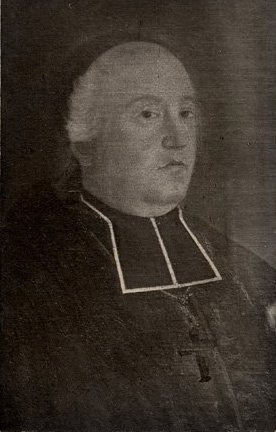Related Research Articles

The Province of Quebec was a colony in British North America which comprised the former French colony of Canada. It was established by the Kingdom of Great Britain in 1763, following the conquest of New France by British forces during the Seven Years' War. As part of the 1763 Treaty of Paris, France gave up its claim to the colony; it instead negotiated to keep the small profitable island of Guadeloupe.

The viceregal consort of Canada is the spouse of the serving governor general of Canada, assisting the viceroy with ceremonial and charitable work, accompanying him or her to official state occasions, and occasionally undertaking philanthropic work of their own. As the host/hostess of the royal and viceroyal residence in Ottawa, the consort, if female, is also known as the chatelaine of Rideau Hall. This individual, who ranks third in the Canadian order of precedence, after the Canadian monarch and the governor general, is addressed as His or Her Excellency while their spouse is in office, and is made ex officio an Extraordinary Companion of the Order of Canada and a Knight or Dame of Justice of the Most Venerable Order of the Hospital of Saint John of Jerusalem.

The office of Commander-in-Chief, North America was a military position of the British Army. Established in 1755 in the early years of the Seven Years' War, holders of the post were generally responsible for land-based military personnel and activities in and around those parts of North America that Great Britain either controlled or contested. The post continued to exist until 1775, when Lieutenant-General Thomas Gage, the last holder of the post, was replaced early in the American War of Independence. The post's responsibilities were then divided: Major-General William Howe became Commander-in-Chief, America, responsible for British troops from West Florida to Newfoundland, and General Guy Carleton became Commander-in-Chief, Quebec, responsible for the defence of the Province of Quebec.

Luc de la Corne was a Canadian-born military officer, merchant, interpreter and politician.

Charles François Bailly de Messein was a priest active in the British province of Quebec during the American Revolutionary War. He is best known for his Loyalist activism during the American invasion of Quebec, when he was injured during the Battle of Saint-Pierre, and for publicly supporting a planned university that his bishop opposed.

Gaspard-Joseph Chaussegros de Léry, his first name was also sometimes written Joseph-Gaspard. He was a military engineer and a political figure in Lower Canada. During the Seven Years' War he proved himself to be an outstanding officer and was one of only a few colonial officers held in high esteem by the Marquis de Montcalm.

The Battle of Saint-Pierre was a military confrontation on March 25, 1776, near the Quebec village of Saint-Pierre, south of Quebec City. This confrontation, which occurred during the Continental Army's siege of Quebec following its defeat at the Battle of Quebec, was between forces that were both largely composed of Canadian militia, including individuals on both sides of the conflict that had been recruited in the same communities. The Patriot forces routed the Loyalist forces, killing at least 3 and capturing more than 30.
Hector Theophilus de Cramahé, born Théophile Hector Chateigner de Cramahé, was Lieutenant-Governor of the Province of Quebec, and titular Lieutenant Governor of Detroit.
John Butler was a businessman and political figure in Nova Scotia. He represented Halifax County in the Nova Scotia House of Assembly from 1762 to 1772.
The title of Chief Justice of Quebec is assumed by the chief justice of the Court of Appeal of Quebec. From 1849 to 1974 it was assumed by the Chief Justice from the Court of Queen's Bench or Court of King's Bench.
François Lévesque was a French-born merchant and political figure in Quebec. He served as a member of the Legislative and Executive Councils.
Maurice-Régis Blondeau was a fur trader, militia officer, and office holder in Canada.

The Battle at Port-la-Joye was a battle in King George's War that took place with British against French troops and Mi'kmaq militia on the banks of present-day Hillsborough River, Prince Edward Island in the summer of 1746. French officer Jean-Baptiste Nicolas Roch de Ramezay sent French and Mi'kmaq forces to Port-la-Joye where they surprised and defeated a force of 200 Massachusetts militia in two British naval vessels that were gathering provisions for recently captured Louisbourg.

Pierre Ayotte was a French-Canadian soldier and fur trader who served with American revolutionary foreces during the American Revolutionary War. Ayotte, who was an inhabitant of Kamouraska, was just as devoted to the revolutionary cause as other Quebecois soldiers on the American side of the conflict such as Clément Gosselin, with whom he served in the 2nd Canadian Regiment.
Urbain Boiret was a priest born in France who came to Canada and became a pivotal superior of the Séminaire de Québec.

Formally known as "His Majesty's Council of Nova Scotia", the Nova Scotia Council (1720–1838) was the original British administrative, legislative and judicial body in Nova Scotia. The Nova Scotia Council was also known as the Annapolis Council and the Halifax Council. After 1749, when the judicial courts were established, the Nova Scotia Council was limited to administrative and legislative powers.
Pierre-René Floquet was a Jesuit priest in Quebec sympathetic to the Americans during the American Revolutionary War.
Louis Liénard de Beaujeu de Villemonde was a militia and army officer and seigneur in Quebec.
Bryan Finucane was an Irish-born lawyer who served as Chief Justice of Nova Scotia from 1778 to 1785.
References
- Shortt, Adam; Doughty, Arthur G., eds. (1918). Documents relating to the constitutional history of Canada 1759-1791. Vol. Part II. Ottawa: J. de L. Taché.
- Quebec Act or – via Wikisource. 14 Geo. 3. c. 83 (UK), 1774